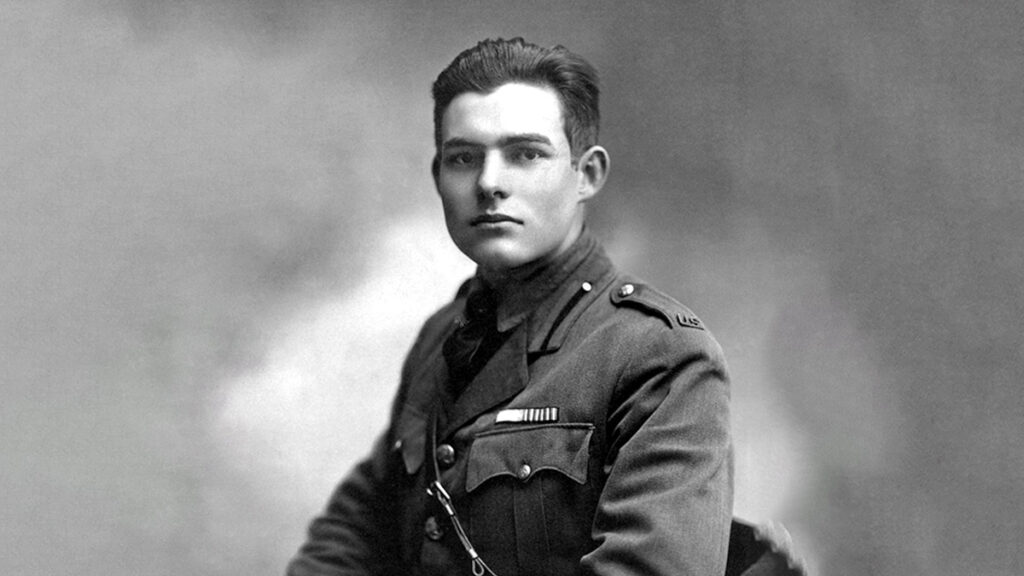We at Uncle John’s like an efficient read, so it’s no surprise that Ernest Hemingway is a favorite at the Bathroom Readers’ Institute. He’s a titan of American literature who wrote about big things like love, war, and manliness. He did it all with famous economy and precision — but how much of it was actually true? Here’s a look at the realities behind Hemingway’s fiction.
Hello to Farewell
While acting as a reporter for the Kansas City Star, World War I began in Europe, and Hemingway enlisted, volunteering for the Red Cross even before the entry of the U.S. His main job was driving an ambulance, but on the evening of July 8, 1918, he was giving chocolate to Italian troops in a trench when it was hit by a mortar shell. Knocked out and buried under the dugout, shrapnel lodged in Hemingway’s foot, knee, thighs, and scalp. While recovering in a hospital, American nurse Anges von Kurowsky treated Hemingway, and they fell in love — although Kurkowsky broke off the engagement. In 1929, Hemingway published A Farewell to Arms, the story of a World War I romance between a nurse named Catherine Barkley and an ambulance driver named Frederic Henry.
The Not-So-Old Man and the Sea
Probably Hemingway’s most-read book — because it’s short and often assigned in junior high and high school English classes — is The Old Man and the Sea. The 1952 novella is the last long work of fiction published while Hemingway was alive and is a mediative, visceral account of an elderly Cuban fisherman named Santiago trying to capture an elusive giant marlin. There’s a real old Cuban fisherman who inspired Hemingway’s creation of Santiago. Hemingway met the Canary Islands-born Gregorio Fuentes when he lived in Cuba in the 1920s, and the author hired the fisherman to watch his boat in the 1930s. He wasn’t actually old when Hemingway knew him — he was about 30 when the duo became friends and he lived until the age of 104, dying in 2002.
The Shortest Short Story
Hemingway’s most famous work might be a story so short and to the point that he only needed six words to tell the tale: “For Sale. Baby shoes. Never worn.” There’s a lot going on in there — but Hemingway never wrote it. It’s a myth started by Papa, a one-man show about Hemingway by John deGroot first performed in the spring of 1996.
The Four Rules
Ernest “Papa” Hemingway also once laid out the four tasks an individual must complete in order to “be a man”: plant a tree, fight a bull, father a son, and write a book. It’s another apocryphal Hemingway work — an account of how it’s short, manly, and evokes Spain (the bullfighting). Three of the four rules (minus the fighting a bull) date to the 1843 poem “The Blasphemer’s Legend” by Thomas Ingoldsby.








